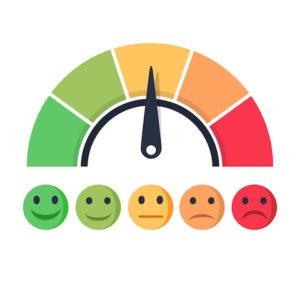WESTLAKE VILLAGE, Calif. — Large business commercial insurance customers (risk professionals) are significantly more satisfied when 11 key performance indicators (KPIs)—best practices that have the most influence on customer satisfaction—are met by brokers and insurers, according to the inaugural J.D. Power and RIMS (the risk management society™) 2014 Large Commercial Insurance Reportreleased on Dec. 10.
This unprecedented report provides an independent and objective measure of overall satisfaction levels among large business insurance risk professionals in the United States and Canada. The full report, based on findings of the J.D. Power 2014 Large Business Commercial StudySM slated for release in February 2015, examines industry-level performance metrics among large business commercial insurers and brokers, and highlights best practices that are critical to satisfying large business insurance risk professionals.
The 11 KPIs focus on three core areas: limiting customer-reported billing errors and renewal issues; understanding the customer’s business; and communicating effectively. The report measures risk professionals’ satisfaction with commercial property, workers’ compensation and auto insurance providers based on five factors: interaction; program offerings; price; billing and payment; and claims. Satisfaction with insurance brokers is also measured, based on four factors: ease of contacting; reasonableness of fees; advice and guidance in selecting program offerings; and timeliness of resolving contact.
Overall satisfaction is highest for brokers (854). Satisfaction with property insurers is 821, followed by auto (811) and workers’ compensation (746).
Billing and payment is the lowest-scoring factor in the auto and workers’ compensation indices, and is among the lowest-scoring in the property index. However, billing and payment satisfaction is significantly lower among workers’ compensation customers (725) than among property (808) and auto (793) customers.
ACE, Arthur J. Gallagher & Co., FM Global and The Hartford perform particularly well among the large business commercial insurers and brokers profiled in the report.
“Whether the results of the survey were surprising or expected, we hope that it encourages a meaningful dialogue and actionable performance initiatives,” said Mary Roth, RIMS executive director. “The primary objective is to foster improved customer satisfaction throughout the large commercial insurance industry.”
Enterprise risk management (ERM) is becoming a more prevalent risk management function at many organizations, with nearly 40% of risk professionals indicating that ERM falls within their area of responsibility. Risk professionals who are not responsible for their organization’s ERM function generally are more satisfied with their insurers/broker than those risk professionals who hold ERM responsibilities. Overall satisfaction is lowest among risk professionals who are responsible for their organization’s enterprise risk management (541).
“The report findings suggest that risk professionals who are responsible for ERM are underserved by insurers and brokers in this area,” said Timothy Bebout, commercial insurance practice leader at J.D. Power. “There is an opportunity for insurers and brokers to provide greater support and resources to customers in organizations that use ERM practices.”
Key Findings
• Price is the leading factor driving satisfaction among auto customers.
• Interaction is the second-most impactful factor driving overall customer satisfaction with insurers across product lines, accounting for nearly one-fourth of the overall model used in each of the product line indices.
• Claims frequency influences overall customer satisfaction levels. As the frequency of claims increases, customer satisfaction decreases. Claims satisfaction is lowest among workers’ compensation customers, among whom 94% have filed at least one claim with their current primary commercial insurer in the past 12 months.
• Flexibility in designing and implementing insurance programs is a KPI for which there is relatively low compliance at 56% for property and 50% for workers’ compensation. Overall satisfaction erodes by 138 points and 316 points respectively when this KPI is not met.
• Ensuring that an insurance representative, such as an engineer or underwriter, is involved during both the service interaction and claims processes are two KPIs that drive satisfaction among property customers. Overall satisfaction erodes by 100 points when an insurer is not involved during a service interaction.
• Providing at least two in-person interactions is another critical performance metric for brokers. Eighty-one percent of customers indicate they have had at least two in-person interactions with their broker. Overall satisfaction declines by 73 points among customers who didn’t have at least two in-person interactions.
The 2014 Large Commercial Insurance Report is based on responses from nearly 1,000 risk professionals or employees of an organization that provide oversight or are members of their organization’s risk management team. Organizations included in the report have at least $100 million in annual revenue or operating budget, and have purchased a commercial property, workers’ compensation or auto policy with a profiled insurer or broker.
About J.D. Power http://www.jdpower.com/about/index.htm
AboutMcGraw Hill Financial www.mhfi.com
About RIMS www.rims.org
To access the report visit: http://store.jdpower.com/products/jdpower-and-rims-2014-commercial-insurance-report












